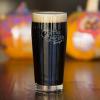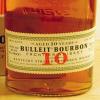The Best Beers to Drink When the Weather's Hot
Good Spirits
Notice that? The days are getting longer, and the humidity is rising right along with the daily temperature. There’s also been the annual decline in the number of student-driven trucks and luxury SUVs blaring pop country on Athens’ city streets. It must be summertime again. With the annual decrease of students matching the increasing options of hot weather brews, it’s time for a guide to summer beer.
The pilsner is a reliable, if unremarkable, summer beer. This lager’s light body, low alcohol content and crisp finish make it ideal for hot weather drinking. Some European pilsners sometimes have a skunky quality from their long trip overseas (I’m looking at you, Heineken) but others are fantastic. Stella Artois, the most famous Belgian pilsner, is quite delicious, but Estaminet, a fellow Belgian, is even better. Czech pilsners, like Pilsner Urquell and Staropramen are made with a unique water profile that complements the style beautifully.
If you’re looking for something from this side of the Atlantic, there are plenty of good American craft pilsners. Victory Prima Pils is fantastic, as is Lagunitas Pils and a whole host of others. The relative lightness of the pilsner means that there isn’t a huge variety of flavor within the style.
Fortunately, the American pale ale exhibits a wider range of flavor than the pilsner. The original APA, Sierra Nevada Pale Ale, is still deliciously hoppy, thanks to the bountiful addition of Cascade hops, but it isn’t too strong for summer drankin’ at 5.6% alcohol by volume. Athens’ own Terrapin Rye falls into the APA category, but you don’t need me to tell you about that one, do you? It’s mighty tasty. A slightly stronger, hoppy APA is Oskar Blues Dale’s Pale Ale, which is 6.5% ABV and brewed up the road in Brevard, NC. If you want a pale ale that’s slightly less hoppy, Southern Tier Live is a deliciously malty alternative.
Shandies and radlers are designed with summer drinking in mind—they're beers mixed with something non-alcoholic, like lemonade or tonic water. Harpoon’s UFO Big Squeeze Shandy is interesting, as it eschews the usual lemonade for grapefruit juice, which blends nicely with the hop flavors present in beer.

Of course, if you prefer a craft beer on the lighter side but can’t stand the idea of pouring juice into your beer, you can try any number of wheat beers. Bell’s Oberon is the gold standard of American wheat beer, and it’s a delicious sign of summertime. New Belgium’s Snapshot Wheat is also really tasty, as are dozens of other American wheat beers. I personally prefer oddities like 21st Amendment’s Hell or High Watermelon, a wheat beer brewed with whole watermelons. It’s surprisingly good, without any disgusting artificial watermelon flavor.
The Germans provide a good alternative to American wheat beer—German hefeweizens tend to be more effervescent and crisper than their American cousins, which creates a more refreshing beverage. My personal favorite is Konig Ludwig Hefeweizen, which is brilliantly done. Erdinger is also pretty tasty, as is Franziskaner.
If you prefer mariachi music to Wagner, there are plenty of Hispanic lagers that are built for hot weather—just avoid Corona. The clear bottle freely allows light to interact with the beer, which leads to skunky beer. Much better choices include Carta Blanca, Presidente, Tecate, Salva Vida, canned Modelo Especial, etc. Go for beer that is packaged in a dark bottle or a can.
Of course, which summertime beer you drink is entirely up to you, although it is helpful to bear in mind the following advice: If you’re outside drinking beer during a hot day, avoid anything really high in alcohol—the heat causes your body to lose moisture, as does that high gravity beer you’re tempted to drink. Hit the sauce too hard and too quickly, and you’ll find yourself asleep before the barbecue is served.
Beers that are lighter in color tend to be better suited for hot weather than the stouts, porters and doppelbocks. You can drink that 10% ABV Imperial Russian Stout, but you’ll feel a lot drunker and your stomach will be much less happy with your decision to drink a winter beer in July.
If you’re out and about in a location that allows drinking, like kayaking or hiking or a beach trip, then do not bring glass bottles to the great outdoors. Those things can break and leave dangerous garbage that can cause serious bodily harm. Only an asshole brings a glass bottle to a place that forbids it. There are plenty of great beers in cans these days, and they taste just as good as bottled beer, thanks to special lining in the cans that prevent the beer from touching the aluminum. They also take up less space than bottles and get colder faster.
Of course, if you’re mowing the lawn, there’s nothing finer than a Miller High Life, PBR or Coors with a slice of lemon.












comments